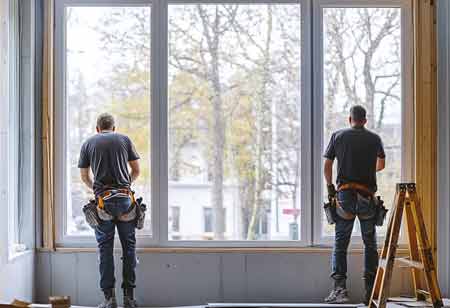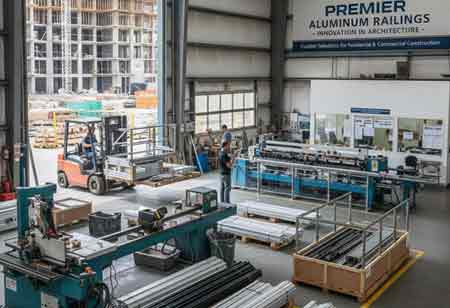Thank you for Subscribing to Construction Business Review Weekly Brief
Specials
- Apartment and Condominium Contractors Canada
- Decking Canada
- Architectural Glass Europe
- MEP APAC
- Construction Saudi Arabia
- German Apartment and Condominium Contractors
- Construction Law APAC
- Outdoor Construction
- Foundation Construction Canada
- MEP Canada
- Kitchen and Bath
- Cold Storage Construction APAC
- Precast Concrete Europe
- Construction Staffing Europe
- Pre-Construction Services
- Flooring System APAC
- Scaffolding Canada
- Swimming Pool Construction Canada
- Construction Management Canada
- Cold Storage Construction Canada
- Flooring Systems Europe
- Residential Construction
- Concrete Canada
- Construction Cladding Europe
- Construction Cladding APAC
- Concretes, Aggregates and Construction Materials APAC
- Concretes, Aggregates and Construction Materials Europe
- Commercial Contractors Europe
- Commercial Contractors APAC
- Dummy
- Construction Insulation, Coating and Waterproofing
- Construction Management APAC
- Landscaping Canada
- Construction Coating Europe
- Construction Tech Startups Europe
- Insulation Services Europe
- Mechanical Contractor Canada
- Mould Remediation and Testing Europe
- Swimming Pool Construction APAC
- Building Sealing Solutions Europe
- Construction Engineering Services
- Mechanical Electrical and Plumbing
- Roofing Systems Europe
- Architectural Glass APAC
- Startups APAC
- Construction Forensic and Owners Representative
- Flooring System
- Waterproofing APAC
- Wall Systems
- Safety and Compliance Europe
- Construction Bidding and Auctions
- Modular and Prefab Construction
- Architectural Glass
- Construction MENA
- Construction Demolition and Recycling Europe
- Modular Construction Europe
- Construction Interiors
- Steel Building APAC
- HVAC
- Doors and windows
- Construction Latam
- Building Information Modeling APAC
- Sustainable Construction APAC
- Building Restoration and Maintenance
- Commercial Contractors
- Specialty Construction
- Construction Engineering Canada
- Construction Engineering MENA
- Modular Construction Canada
- Modular Construction APAC
- Roofing and Siding Systems
- Workforce Management and Staffing
- Roofing Systems APAC
- Construction Consulting
- Steel Building Europe
- Construction Demolition and Recycling APAC
- Safety and Compliance APAC
- Concretes, Aggregates and Construction Materials
- Construction Cladding
Vinyl Replacement Windows: Redefining Efficiency, Aesthetics, and Sustainability
Vinyl replacement windows have emerged as a crucial component in contemporary construction, prioritizing energy efficiency and sustainability.

By
Construction Business Review | Monday, March 17, 2025
Stay ahead of the industry with exclusive feature stories on the top companies, expert insights and the latest news delivered straight to your inbox. Subscribe today.
Vinyl replacement windows have emerged as a crucial component in contemporary construction, prioritizing energy efficiency and sustainability. They effectively minimize heat loss during winter, keep indoor spaces more fabulous in the summer, and contribute to reduced energy expenses, positioning them as a preferred option for homeowners and businesses.
Known for their durability and reduced maintenance requirements, these windows attract environmentally aware consumers seeking practical alternatives. Available in various styles and finishes, they seamlessly combine functionality with visual appeal, improving residential and commercial environments while meeting the increasing demand for affordable, eco-friendly materials.
Present Dynamics and Barriers
The market for vinyl replacement windows is experiencing notable progress, propelled by the increasing demand for energy efficiency and contemporary design. Both homeowners and businesses are placing greater importance on windows that enhance the visual appeal of their properties and facilitate energy savings. This trend has resulted in innovative designs and technologies that address these changing preferences.
Energy-efficient features are at the forefront of current trends. Modern vinyl replacement windows incorporate advanced technologies, including low-emissivity coatings and gas-filled panes, which enhance insulation and decrease energy usage. These attributes resonate with the rising focus on sustainability and the necessity to reduce utility expenses, making them a favored option among environmentally aware consumers.
Customization has surfaced as a significant trend within the industry. Vinyl windows are now offered in an extensive array of colors, finishes, and styles, enabling property owners to choose options that match their architectural aesthetics. This emphasis on personalization guarantees that vinyl replacement windows fulfill functional and visual needs, increasing their market attractiveness.
The incorporation of innovative technology represents another critical advancement. Smart vinyl windows can modify their tint in response to sunlight intensity, optimize the influx of natural light, and even be managed remotely via mobile applications. These functionalities provide both convenience and energy efficiency, highlighting the growing integration of smart home technologies.
Durability and minimal maintenance requirements are key factors contributing to the increasing popularity of vinyl replacement windows. Manufacturers consistently enhance the quality of materials and refine production techniques to guarantee enduring performance. This emphasis on reliability and ease of maintenance has established vinyl windows as a favored choice for residential and commercial settings.
The vinyl replacement window sector is experiencing rapid evolution, with innovations catering to contemporary consumers' demands. Trends such as energy efficiency, innovative technology integration, and customization underscore the industry's dedication to providing solutions that merge functionality, sustainability, and aesthetics. As these developments progress, vinyl replacement windows are poised to influence the future of construction and renovation significantly.
The vinyl replacement window sector encounters numerous obstacles that hinder its expansion and acceptance. A significant concern pertains to the resilience of vinyl materials under extreme weather conditions. Extended exposure to intense sunlight or varying temperatures may warp or crack the vinyl over time, thereby diminishing its lifespan and functionality. This predicament raises doubts regarding the long-term dependability of vinyl windows, especially in areas characterized by severe climates.
Ensuring energy efficiency presents another challenge. Although vinyl windows are engineered to offer insulation, the material's propensity to expand and contract with temperature fluctuations can jeopardize the seals between the glass panes. This situation may result in air leaks and a decline in energy efficiency, ultimately reducing the product's overall value. Tackling this challenge necessitates ongoing advancements in material design and manufacturing techniques.
Aesthetic constraints pose a challenge for vinyl replacement windows. Although there have been improvements in design, many consumers still view vinyl as less visually appealing than options such as wood or aluminum. This perception can significantly affect purchasing choices, particularly among homeowners prioritizing high-quality finishes or architectural integrity. Manufacturers must focus on creating more adaptable and visually appealing products to cater to a wide range of consumer tastes.
Environmental issues are gaining prominence within the industry. Although vinyl windows are frequently promoted as energy-efficient, the processes involved in manufacturing and disposing of vinyl materials raise concerns regarding sustainability. Vinyl's dependence on non-renewable resources and the difficulties related to recycling contribute to its environmental impact. As sustainability becomes increasingly crucial to consumers and regulators, the industry must seek eco-friendly alternatives and practices.
The market for vinyl replacement windows encounters rivalry from alternative materials that present unique benefits. Fiberglass and composite windows are increasingly popular due to their enhanced durability and energy efficiency. This competitive landscape compels vinyl manufacturers to pursue innovation and product differentiation to sustain their market position.
These challenges underscore the importance of continuous industry research, development, and collaboration. By tackling these concerns, the vinyl replacement window sector can adapt and fulfill the expectations of contemporary consumers while preserving its significance in a competitive environment.
Prospects Ahead
Considerable opportunities and advancements characterize the future of vinyl replacement windows. Innovations in materials and design are set to improve durability and energy efficiency, effectively tackling issues such as weather resistance and insulation. Integrating innovative window technologies, including self-tinting capabilities and remote control functionalities, is anticipated to become more prevalent, in line with the increasing trend toward smart homes.
There is a growing emphasis on sustainability, with manufacturers investigating recyclable materials and environmentally friendly production techniques. As environmental concerns intensify, vinyl windows will likely embrace greener alternatives to minimize their carbon footprint. These developments position vinyl replacement windows as essential in contemporary construction and renovation endeavors.





